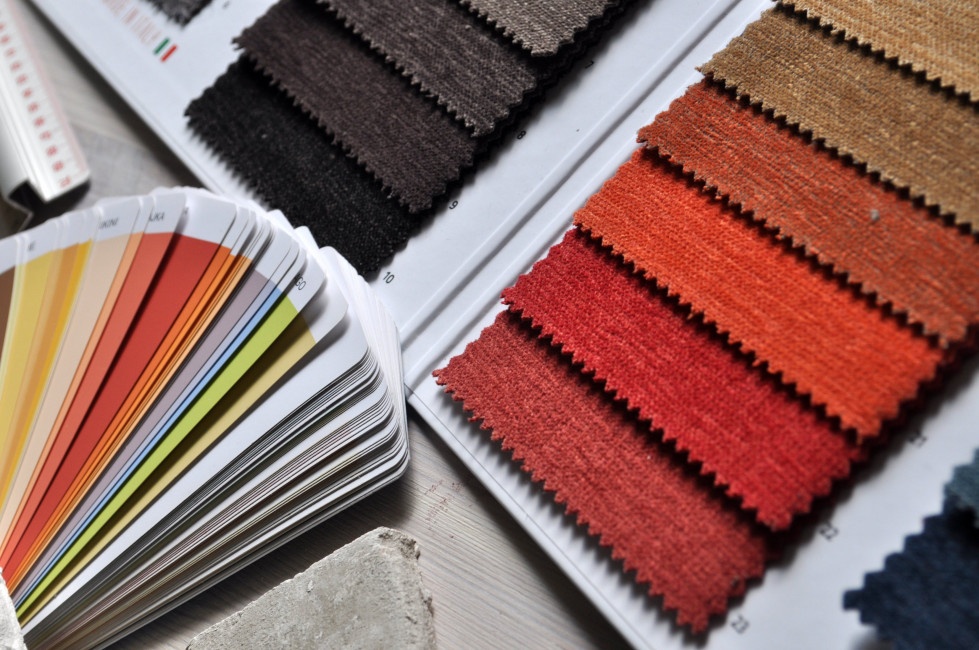Too many homeowners stick with drab, neutral paint colors for their interior spaces, out of nothing more than fear – fear that bold colors will clash with their décor choices, or wear on the eye too quickly. But colorful paint can give your home a bright, modern look – or recall the aesthetics of centuries past. Colorful rooms have been featured in every period of American architecture, and just because gray walls are in right now, doesn’t mean you have to stick to neutral colors.
But how do you choose the right colors for your home’s interior? Choosing a bold, bright color palette might seem daunting if you don’t have any background in art, but it’s easy to master some color theory basics and choose complementary colors for your home that will stand the test of time.
Bring the Outdoors In
One of the most foolproof ways to choose a bold color scheme that works is to look to the outdoors. Colors that appear in nature are colors that will look good on your walls: buttery, sun yellow; dark, foliage green; robin’s egg blue. If you’re looking for complementary colors for a single room, pair these nature-inspired tones with hues that mimic the ones that appear with them in nature. Forest green works well with a dark, rich brown, for example.
Use Color Theory to Choose Complementary Colors
You don’t need to a deep or thorough understanding of color theory just to paint your walls – you just need to know what colors go well together. For that, you can use a color wheel. This simple tool shows you the relationship between colors, so you can choose complementary tones for your new décor.
Find Inspiration in Your Present Décor
If you’re not sure what colors to pick for your walls, look to your present décor for inspiration. Choose a color found in your upholstery, or in the pattern of your curtains or comforter. Break out the color wheel and think about what colors would best complement your rug, paintings, throws, or furniture. Search your closet for two or three colors you like best. If you can, take some items to the store with you to match to sample cards. Choose shades that are darker or lighter than those found in your décor, so that your room feels unified instead of matchy-matchy.
Understand Undertones
 Before you buy paint or start searching for local painters to help you with your project, you need to know what paint undertones are, and how they can affect the look of your room. Color undertones can make choosing even a neutral paint color difficult.
Before you buy paint or start searching for local painters to help you with your project, you need to know what paint undertones are, and how they can affect the look of your room. Color undertones can make choosing even a neutral paint color difficult.
That’s because most paint colors are made by mixing many colors of paint together in order to make a specific shade. The only colors that aren’t made this way are primary colors – so only a true blue, yellow, or red won’t have undertones. Even white paints will have an undertone of some kind.
Undertones come from the colors that are mixed together to make the masstone, or the color you see when you look at the paint or its sample. You may not always see a paint color’s undertone. It will only come out in certain lighting, or when contrasted against a certain color. That’s why undertones can really mess up your color palette – the beige you choose may have a green undertone that clashes with the warm red or yellow undertones of your wood floors or cabinetry, for example, and you might even realize it until the paint is on the wall.
Learn how to identify an undertone by comparing your sample cards to primary colors or to colors that you know have a warm undertone. If you know that you’re going to have wood finishes or other warm or cool undertones in the room, ask for a shade with a matching warm or cool undertone. Avoid undertone problems by getting a sample size of the paint and painting a swatch before you commit to the whole wall. If you do end up with the wrong undertone, don’t panic. Try changing your light bulbs first. Changing to warm or cool lighting to match the undertones in your paint can often resolve the problem.
Don’t Shy Away from Dark Colors
Most people don’t want to use dark colors on interior walls because they’re afraid it will make their rooms seem smaller and more claustrophobic. But often, the opposite is true – dark colors recede, so they can make rooms appear larger. Choose a color that’s one or two shades lighter for the ceiling. This will soften the color transition from walls to ceiling, expanding the room even more.
Choosing a bright color palette for your home can be daunting, but it’s so worth it to express your personal style through colorful interiors. You’ll be surprised at how different your home can look when you break away from a neutral color palette and venture toward the bold and striking instead.



